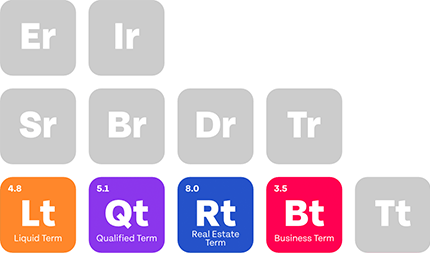Originally Posted by Erin Dabbs from Physician Focused on Apr 2, 2019
You’ve received your first-ever 40-page contract from an employer. It’s your first job offer and you deserve it. What feelings come to mind when thinking about coming back around to the employer and negotiating? It’s normal to want to avoid sounding greedy, not wanting to be difficult to work with, or shock your employer on day one, but it is important to be fully aware of what you are signing.
Remember this:
Employment conversations between you and the prospective employer are lopsided conversations. On one side of the table, the employers side, there are millions to billions of dollars of resources, a team of attorneys, detailed policies, a team of certified human resource staff, and numerous executives and staff available at all times. On the other side — it’s just you.
Having representation and someone to help you with negotiations levels the playing field. We recommend having representation from both a financial advisor and an attorney.
Think about these scenarios:
Imagine you are a hiring hospital. I am a physician looking for a job and we have had great conversations back and forth. You’re ready to make me an offer. You fly me and my husband out, we are all sitting in a conference room talking, and you make me an offer.
Option 1:
I tell you it’s been great meeting and talking with you. I say it’s going to be a great match after getting to know you. Finally, I take out my pen and sign the contract.
Option 2:
I tell you it’s been great meeting and talking with you. I say it’s going to be a great match after getting to know you. Then, I continue talking and say I would like to take the contract and have my financial advisor and attorney look over it with me so I understand everything because I plan on being at the hospital for a long time. Finally, I ask when the deadline is and assure you I will get back to you by the deadline.
Which employee would you be more impressed with? We prefer Option 2 as it perceived by employers to be more professional.
It’s time to level the playing field. Bringing in a financial advisor and an attorney shows your future employer that you are serious about the offer and prepared to make an educated decision. It also protects you from making mistakes that impact your career longevity and future compensation for years to come. We’ve outlined three items physicians need to pay special attention to and most-likely negotiate when reviewing an employment contract as recommended by financial advisors and attorneys.
1. Upfront Compensation
Many employers intrigue potential employees with upfront compensation, or extra benefits on top of your salary. Look through your contract for these four common types of upfront compensation: sign-on bonuses, relocation reimbursement, student loan forgiveness, and residency stipends. A competitive contract offers three of the four upfront compensation benefits, a normal contract usually offers two of the four.
Sign on Bonus
A lump sum of money paid out after committing to a contract. The amount varies by specialty and location. According to HealthLeaders, 9 out of 10 physicians got sign on bonuses in 2016. The average bonus was 4.8% of the physician’s salary, most ranging from $10,000 to $50,000, with a few exceeding the average.
Relocation Reimbursement
This is a reimbursement for moving expenses – which can be very high. The amount typically varies by how far you are moving. A general rule of thumb is to expect $5,000 in state, $10,000 between states, or $15,000 for a cross-country move.
Residency Stipend
This is money given to residents over time after they accept a job while they are finishing their residency. It is an incentive to sign with the employer early. Typically it is like an allowance, or chunk of money, each month for up to 12 months before you begin the job.
Student Loan Forgiveness
Loan forgiveness is a part of some offers, but relatively uncommon. Nevertheless it is important to know it exists as a form of compensation. It is a loan agreement that varies in every circumstance. Therefore, it can be similar to a sign on bonus in that you receive a lump sum of money towards your student debt after signing your contract. It can also be similar to a retention bonus in that you receive several lumps sums over several years if you continue employment.
2. Productivity Bonuses or Incentive Plans
Moreover, it is common for physicians to have a base salary and a productivity bonus. There are two common types: RVU based and collections based.
Relative Value Unit (RVU)
This is the most common productivity bonus. Your employer will likely assign a multiplier dollar amount per RVU and a threshold that must be reached. This productivity will equate to additional compensation. Sometimes when you ramp up your productivity with an employer, you can negotiate to no longer have a static salary and be paid based on your productivity. Our financial advisors use the MGMA database and compensation date from thousands of employment contracts to compare your RVU offer to other physicians in your specialty and region. They can ensure your compensation is in line with the median assist you to determine if your offer is competitive.
Collections
Collections are more common in a partnership role, but you can be an employee and still have a collections model. Expenses are subtracted from the revenue of work to determine the employer’s collections from a patient. Of the collections you bring in for your services, you will be offered to take home a percentage. Taking home 25-50% of your collections is typically a competitive offer. Financial advisors with MGMA data can show you what is normal in your region and specialty to bring in from collections as a bonus.
There are also various types of Incentive Plans that employers may offer you. The most common is a Quality Incentive Bonus. This is where the employer will use patient satisfaction scores to offer you additional pay based on your scores.
3. Malpractice Insurance and Tail Insurance
Have you thought about how you and your employer will protect you? Malpractice insurance protects physicians from liability associated with wrongful practices and covers the costs of associated lawsuits. Overlooking the type and amount of malpractice insurance now could cost hundreds of thousands out of your pocket later.
Table of Contents
“Have you thought about how you and your employer will protect you?” CLICK to tweet.
There are two types of malpractice insurance: claims based and occurrence based. Briefly described, occurrence based insurance covers you while you are still employed and even if you leave and become employed elsewhere — the hospital’s policy covers you beyond your employment with them. Claims based insurance covers you as long as you continue to work for your employer. Once you leave, you’re not covered.
That’s where tail insurance comes in. Your employer will require you to have tail insurance if you leave. When you give notice, you must have proof of tail insurance, otherwise the employer can withhold your paychecks. What’s the big deal? Tail insurance is expensive.
In a financial advisory firm’s experience:
“A doctor put in 6 months notice. They didn’t have their contract reviewed before signing. Their employer said they we going to withhold her pay until she had a tail insurance policy. They were able to withhold her checks until she had proof of insurance. Tail insurance is tens of thousands of dollars depending on specialty and how long you have been in practice. Tail insurance is 2 to 3X the cost of malpractice insurance.”
How costly can it really be if you overlook this line in your contract? We reached out to an insurance company that provided us with this quote. It shows us the difference between the cost of malpractice insurance and tail insurance. In the first year after leaving a job, this doctor pays $24,344 for tail insurance. By the 5th year, he or she will have spent $215,250 out of pocket for tail insurance coverage. This becomes a yearly expense that could1continue on indefinitely.
Est. Tail Insurance Costs – Pain Management
$ Base $ Tail
Year Premium Premium
1 $7,688 $24,344
2 $12,813 $41,000
3 $20,500 $47,406
4 $23,575 $51,250
5 $25,625 $51,250
Negotiation Strategies:
- If you have a contract offering you occurrence-based insurance: this is the best scenario and rare.
- If you have offered claims-based insurance: Ask your employer to pay for tail coverage.
- Lastly, if they don’t agree or you think it’s too aggressive of an ask: Ask your employer to transition the cost of tail coverage from you to the employer on a graded basis over time.
Here’s what that could look like:
Employed for 12 months or less: Employee is 100% responsible for tail insurance
Next, employed for 2 years: Employee is 66% responsible, employer is 33% responsible
Employed for 3 years: Employee is 33% responsible, employer is 66% responsible
Finally, employed for 4 years: Employer is responsible for tail insurance costs
*This is just an example. Speak to a financial advisor to determine the best negotiation strategy for you.
Upfront compensation, insurance, and productivity bonuses are just three line items to keep in mind when reading through your employment contract. To ensure your best interests are protected, bring an attorney and financial advisor to the negotiation table with you. They will educate you and protect you from making mistakes.
Notes: 1. According to a Physician’s Thrive, financial advisor tail insurance can be an indefinite yearly expense, a yearly expense for many years, or a one-time lump sum. Their financial advisor, Michaela, sited a recent occurrence where her OBGYN client paid a one-time lump sum of $200,000+ for tail insurance.
Disability insurance is also crucial for income protection. Learn more in our Disability Insurance Guide for Physicians.
Get your contract reviewed now.
Work with a contract review advisor and attorney team.
Talk to an Advisor
Need help with something else?
Get Free Disability Insurance Quotes
Start Financial Planning






































